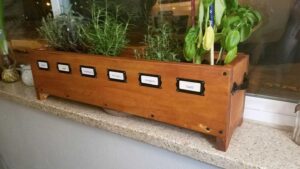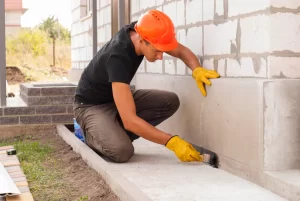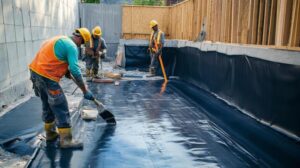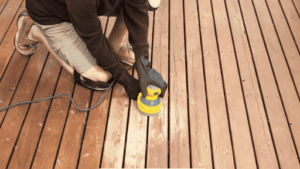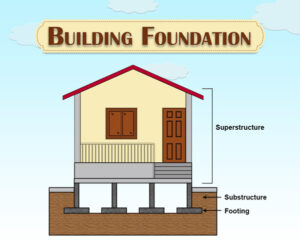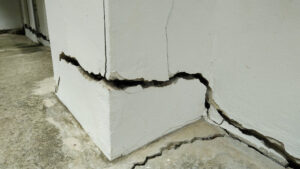Must Read: Is Basement Waterproofing Covered by Insurance
Table of Contents
ToggleHow Water Enters Through Your Basement Walls
Water can enter your basement through a variety of pathways. The most common ways water infiltrates basement walls include:
- Cracks in the Foundation: Small cracks or gaps in the foundation of your home can allow water to seep inside. Over time, these cracks may expand, worsening the problem.
- Hydrostatic Pressure: This occurs when water accumulates in the soil surrounding your home and exerts pressure on the basement walls, forcing water through tiny pores or cracks.
- Condensation: Poor ventilation can cause humidity to rise inside the basement, leading to condensation on walls. Over time, this excess moisture can become problematic.
- Leaky Plumbing: Pipes running through your basement walls or ceiling can leak, contributing to moisture buildup inside the walls.
- Surface Water: Improper drainage systems outside your home can cause rainwater to collect near the foundation, eventually finding its way through basement walls.
Why Does Water Enter Through Your Basement Walls?
Several factors contribute to water entering your basement walls. Knowing the causes can help you prevent the problem or deal with it more effectively:
- Poor Construction: If your home’s foundation was not constructed with proper waterproofing materials, it’s more prone to water infiltration over time.
- Settling Foundation: As your home settles into the soil, small shifts in the foundation can create cracks that allow water to seep through.
- High Water Table: If your home is built in an area with a high water table, groundwater can accumulate around the foundation, leading to increased hydrostatic pressure.
- Improper Grading: If the land around your home slopes toward the foundation rather than away from it, rainwater may pool around the walls, seeping through over time.
- Lack of Maintenance: Regular maintenance of your basement’s waterproofing systems, such as drainage pipes and sump pumps, is essential for preventing water intrusion.
Top 10 Tips for Waterproofing Basement Walls from Inside

- Identify and Repair Cracks
The first step in waterproofing is to inspect your basement walls for visible cracks or holes. Use hydraulic cement or epoxy fillers to seal these openings and prevent water from penetrating. Small cracks may not seem like a big deal, but they can allow significant amounts of water to enter over time. - Apply Waterproof Paint
Waterproof or masonry paint can be applied directly to the inside walls of your basement. This adds a protective layer that helps block moisture from seeping in. Waterproof paint is an easy and affordable solution, ideal for minor moisture problems. - Use Interior Waterproofing Membranes
Interior waterproofing membranes are sheets of material that are installed directly onto your basement walls. These membranes act as a barrier between your walls and any moisture trying to enter. They’re particularly effective for homes with more severe moisture issues. - Install an Interior Drainage System
Installing an interior drainage system helps channel water away from your basement walls. This typically involves laying perforated pipes along the perimeter of your basement floor that collect water and direct it to a sump pump for removal. It’s a more complex but effective solution for persistent water problems. - Ensure Proper Ventilation
Good air circulation can reduce humidity levels inside your basement. Install exhaust fans or vents to keep the air moving and prevent condensation from forming on your walls. Regular ventilation also prevents mold growth and other moisture-related issues. - Use a Dehumidifier
If your basement tends to feel damp, using a dehumidifier can help control moisture levels. A dehumidifier reduces the amount of water in the air, minimizing the chances of condensation and moisture buildup on your basement walls. - Seal Windows and Doors
Check the seals around any basement windows or doors to ensure they are watertight. Use caulking or weatherstripping to seal gaps and prevent rainwater from entering through these points. Even small openings can lead to significant moisture problems over time. - Fix Leaky Pipes
Leaky plumbing is a common source of water damage in basements. Inspect all visible pipes for signs of leaks and repair them promptly. Even minor leaks can contribute to long-term moisture issues inside your basement walls. - Install a Sump Pump
A sump pump can help manage water buildup by removing excess water from your basement. This is especially useful if your home is prone to flooding or has a high water table. A sump pump ensures that water is directed away from your foundation, keeping your walls dry. - Use Epoxy Sealers for Added Protection
Epoxy sealers penetrate deep into your walls, forming a tough barrier that prevents water from getting through. These sealers are highly effective for homes with older or porous basement walls. Applying epoxy sealers will give you long-lasting protection against moisture.
Prevention Tips for Long-Term Success
To ensure long-term success in keeping your basement dry, follow these preventive measures:
- Regularly Inspect Your Basement: Check your basement walls, windows, and floors for any signs of water damage or new cracks.
- Maintain Your Drainage System: Ensure that your gutters, downspouts, and drainage systems are clear of debris and direct water away from your foundation.
- Monitor Humidity Levels: Use a hygrometer to keep track of humidity levels in your basement, and run a dehumidifier if needed.
- Reapply Waterproofing Products: Reapply waterproof paint or sealers every few years to ensure continued protection.
Conclusion
Waterproofing basement walls from the inside is essential for preventing water damage and maintaining a dry, comfortable living space. By following these top 10 tips and practicing regular maintenance or Call professional waterproofing experts, you can protect your home from moisture and avoid costly repairs in the future. Don’t wait until water becomes a problem—start waterproofing your basement today!


